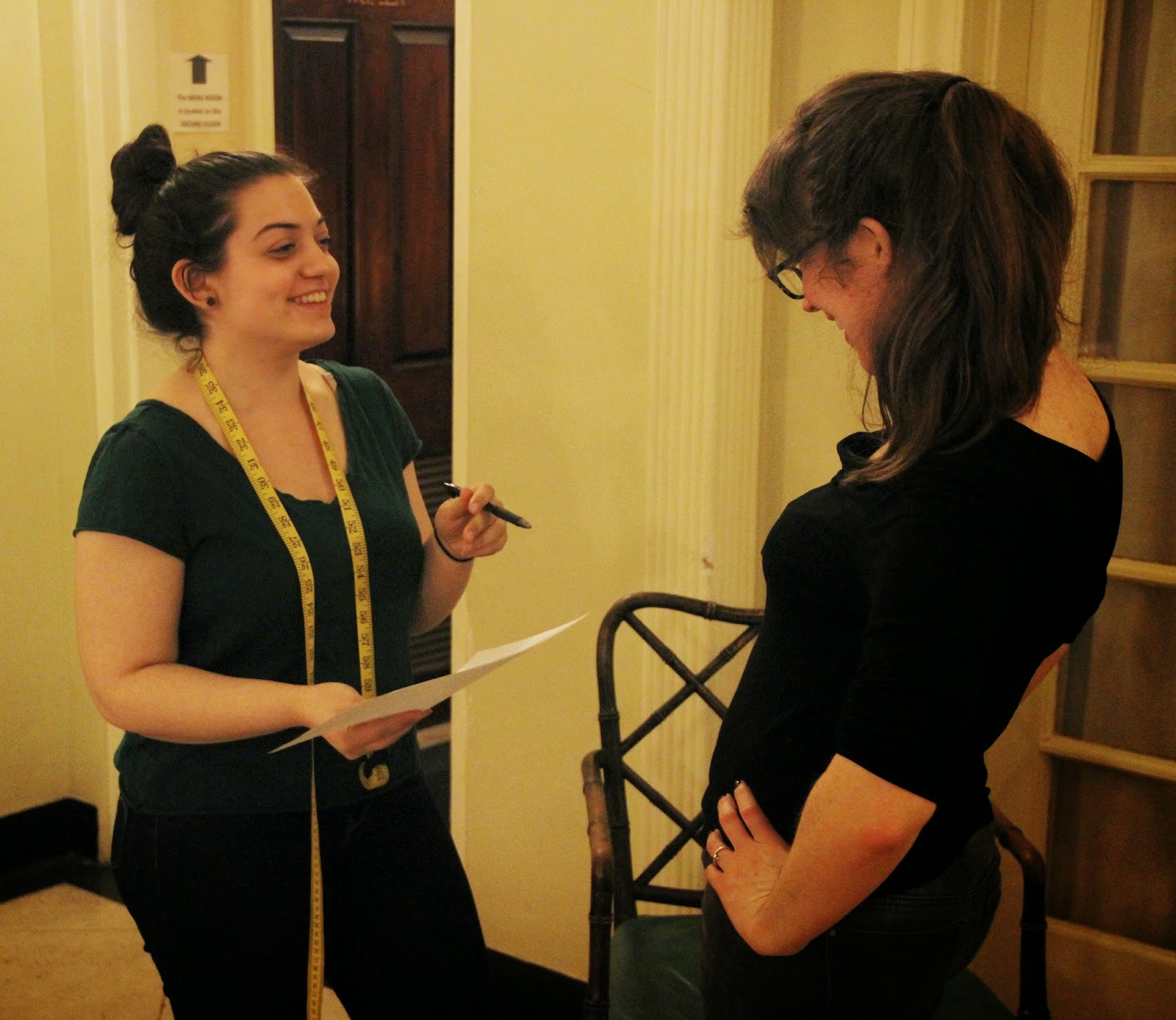Name: Michelle Persoff
What is your role in Searching for Sebald?: Costume Designer
Tell us a little about Deconstructive Theatre Project?: What sets our company apart is the way we tell a story. We explore how the human mind grasps an experience and stores that memory for safekeeping. From a costume perspective, the touch of a fabric or the image of light shining through it is a trigger for a memory from years ago. We then use live film to project that image—a performer tugs at a silk tie laced around a collar—and the audience knows there was a wedding and the groom was nervous. We do not need dialogue to convey the message, and so our work tends to be more about manipulating images.
How is the creation process going so far?: Our rehearsals begin without a script, and in some ways, that can be unnerving. For me, the process is unlike any other show because I have no distinct characters to begin working on. From the beginning of rehearsals, there are only ideas, and you must be willing to focus on where the idea leads you creatively rather than try to push out a product. And in that way, this process has been very organic and freeing. I am only beginning to see my ideas take shape, and it is exciting to see how they will take form.
What is the developmental process like for you as an artist?: Usually when I am introduced to a new work, I read through whatever text I have—in this case it was "The Rings of Saturn"—and I look for an outstanding mood. The mood is the motif that I create on, and then I begin researching everything and anything that can stem from it whether it is a movie, place, or style of furniture. If I get the mood right, the clothes will compliment it.
What is it like working with mixed media? What are some challenges, benefits, risks etc.?: The biggest challenge for costumes is practicality. I can’t put big necklaces on people or let them wear delicate fabrics because they will catch on the equipment. You definitely have to pick and choose your battles, and you do a lot of compromising.
Tell us a little about W.G. Sebald and “The Rings of Saturn”: To me, Sebald was like the most interesting man in the world, but on a much quieter level. In "The Rings of Saturn", he goes on a walking tour along The North Sea, during which he meets strangers and explores deserted towns and recounts volumes of historical information covering everything from fishing towns to a conniving Chinese empress. Based on his tangential style of writing, I think he was the type of person who notices when you make a mistake but will not correct you. He does not seek to prove anything. He is comfortable and confident in his own skin, and to me, that is the most endearing part of his storytelling.
How does W.G. Sebald and “The Rings of Saturn” inspire you as artist?: It’s exciting to hear so much historical information in a conversational style rather than reading a textbook. When Sebald talks History, it holds a relevance that is hard to grasp from reading textbooks. While reading "The Rings of Saturn", I found myself wanting to go learn all I possibly could about the subjects he covers, and I think an artist needs to have that ongoing thirst for knowledge in order to continue to create and innovate.
What is the importance/relationship of memory and the wandering mind to you as an artist?: Costume ideas come to me by making connections from one reference to another. My mind has always wandered, but that wandering helps me catch hold of the mood I want to express for a show. For example, I see a dried flower—I think of a rose I put in a journal which makes me think of the bouquet it came from which (for any old reason) makes me think of Ms. Havisham from "Great Expectations". And then I’m off and running. I go watch the movie, read the book, research Charles Dickens, research weddings, research flowers, etc. etc. Yes, history is extremely important, but history is told through many voices, and so, many viewpoints. I thrive off of how people remember events because what they remember pulls the trigger to the next reference. Those triggers are the most valuable parts of good storytelling.
What is it like exploring neuroscience through creativity?: Rewardingly challenging. You don’t always realize what you’re thinking until you see it pulled apart in front of you. And when you pull it apart incorrectly, you can tell because you don’t recognize the thought as your own. The visual aids are what make these concepts tangible and it’s fascinating.
Why Searching for Sebald now?: I think we found a great challenge in Sebald. His mind spans such a huge breadth of information, and we’ve made it our task to condense it all into something that looks as natural as it was for him to think it. And when such an opportunity knocks, it’s hard for us not to answer.
What can we expect to see in Searching for Sebald?: Nostalgia through a modern lens. Quite literally, actually.

